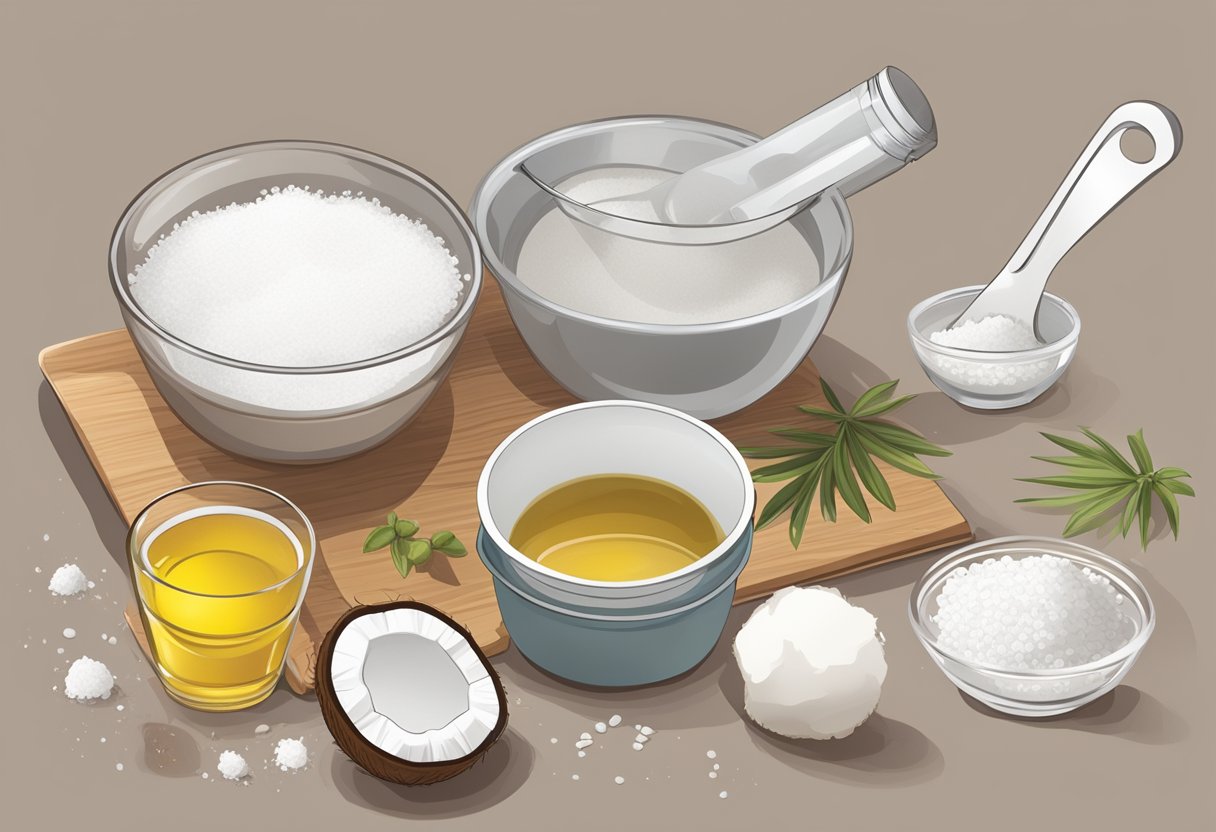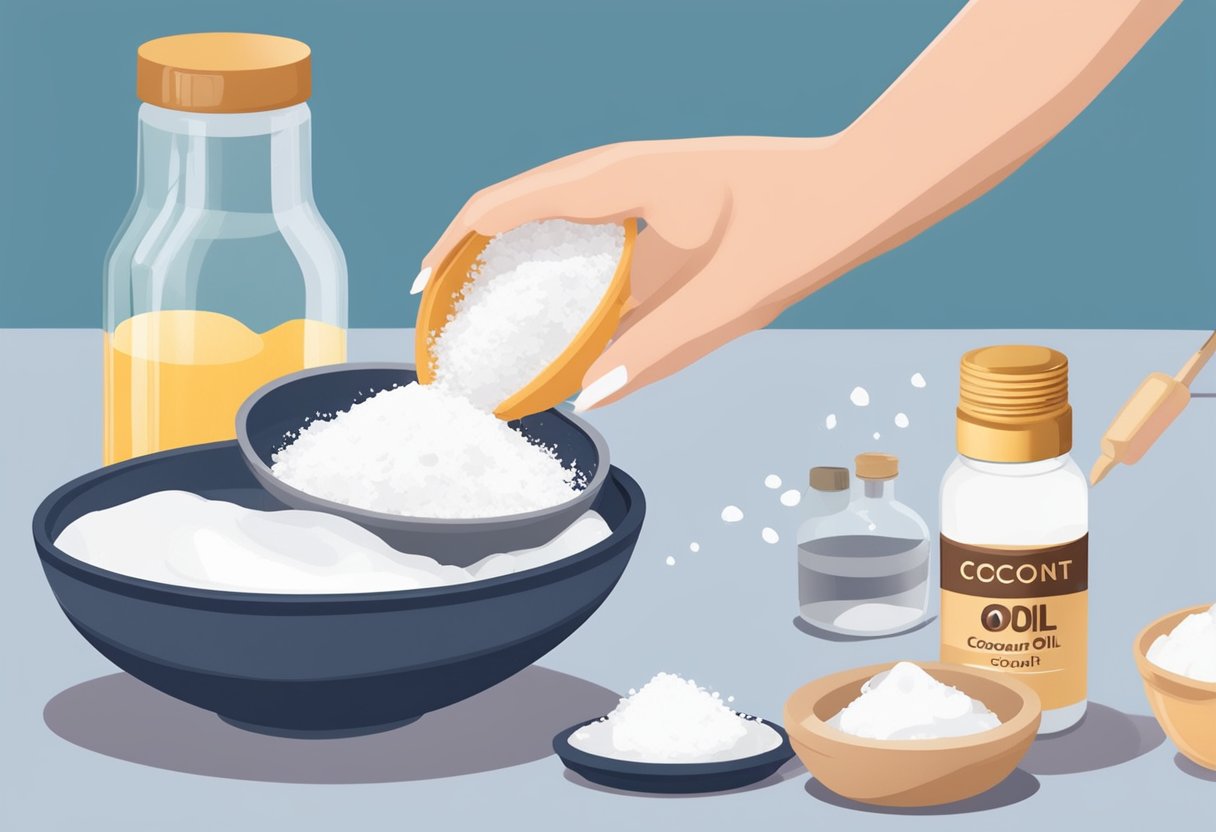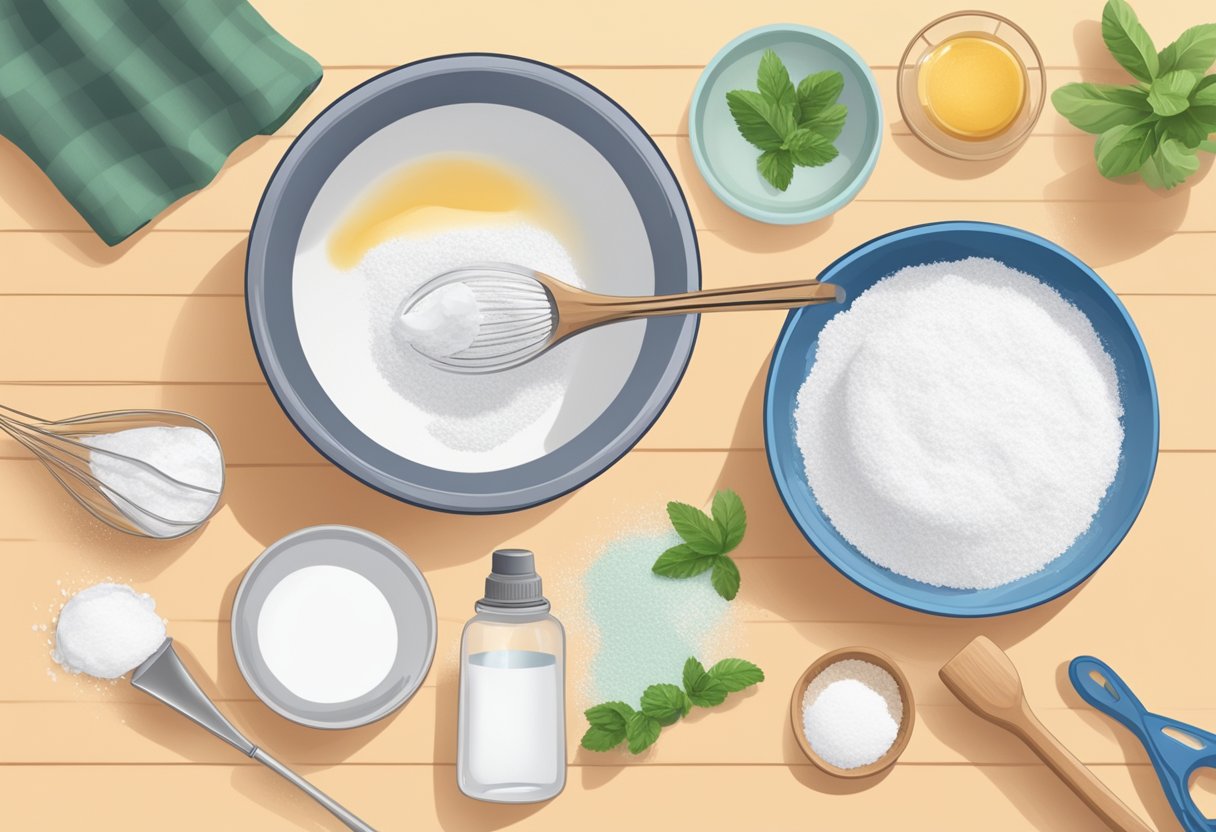Baking soda is a versatile household item that can be used for a variety of purposes, including making your own deodorant. Many people are turning to natural alternatives to traditional deodorants, which often contain harsh chemicals. Baking soda deodorant is a simple and effective way to stay fresh and odor-free without exposing yourself to potentially harmful ingredients.

To make baking soda deodorant, you will need a few basic ingredients that can be found at your local health food store or online. These include baking soda, cornstarch or arrowroot powder, coconut oil, and essential oils (if desired). Mixing these ingredients together in a bowl and applying them to your underarms is all it takes to create a natural deodorant that actually works.
One of the benefits of making your own baking soda deodorant is that you can customize it to suit your needs. Essential oils can be added for fragrance and additional antibacterial properties. You can also adjust the amount of baking soda and cornstarch or arrowroot powder to create a formula that works best for your body. With a little experimentation, you can create a natural deodorant that keeps you feeling fresh and confident all day long.
Benefits of Baking Soda Deodorant

Baking soda is a common household ingredient that can be used as a natural deodorant. It is a cost-effective, natural alternative to traditional deodorants that contain harsh chemicals. In this section, we will discuss the benefits of baking soda deodorant.
Natural Ingredients
One of the most significant benefits of baking soda deodorant is that it is made with natural ingredients. Traditional deodorants often contain chemicals like aluminum, parabens, and phthalates, which can be harmful to the body. Baking soda, on the other hand, is a natural odor neutralizer that absorbs sweat and prevents odor-causing bacteria from growing. Baking soda deodorant is also free of synthetic fragrances, which can cause skin irritation and allergic reactions.
Cost-Effectiveness
Another benefit of baking soda deodorant is its cost-effectiveness. Baking soda is an inexpensive ingredient that can be purchased at any grocery store. Making your own baking soda deodorant is a simple and affordable way to switch to a natural deodorant. It can save you money in the long run, as you will not need to purchase expensive deodorants regularly.
Sensitivity Considerations
While baking soda deodorant is generally safe for most people, it may not be suitable for individuals with sensitive skin. Baking soda can be abrasive and may cause skin irritation, especially if used in large quantities. It is essential to do a patch test before using baking soda deodorant regularly. If you experience any redness, itching, or burning sensations, discontinue use immediately.
In summary, baking soda deodorant is a natural, cost-effective alternative to traditional deodorants. It is made with natural ingredients, free of harmful chemicals, and can save you money in the long run. However, it may not be suitable for individuals with sensitive skin, so it is essential to do a patch test before using it regularly.
Essential Ingredients

When making baking soda deodorant, there are a few essential ingredients that you’ll need. These include baking soda, coconut oil, essential oils, and arrowroot powder or cornstarch. Each of these ingredients plays a specific role in the deodorant’s effectiveness.
Baking Soda
Baking soda is a key ingredient in baking soda deodorant because of its antibacterial and anti-fungal properties. It effectively absorbs moisture, which is why it is commonly used in DIY recipes for toothpaste, shampoo, and home cleaners. When mixed with a liquid or oil, baking soda will create a paste that can be rubbed under your arms to fight odor.
Coconut Oil
Coconut oil is another essential ingredient in baking soda deodorant. It is a natural moisturizer that helps to soothe and protect the skin. When combined with baking soda, it creates a paste that is easy to apply and helps to keep your underarms feeling fresh and clean.
Essential Oils
Essential oils are used in baking soda deodorant to add a little fragrance. They are natural oils that are extracted from plants and have a variety of health benefits. Some popular essential oils used in deodorant include lavender, tea tree, peppermint, and lemon.
Arrowroot Powder or Cornstarch
Arrowroot powder or cornstarch is used in baking soda deodorant to help absorb moisture and keep your underarms feeling dry. These powders are natural and gentle on the skin, making them a great alternative to commercial deodorants that contain harsh chemicals.
Overall, these essential ingredients work together to create a natural and effective baking soda deodorant that is gentle on the skin and helps to fight odor. By using these ingredients, you can create a deodorant that is tailored to your specific needs and preferences.
Step-by-Step Guide

Making baking soda deodorant at home is a straightforward process that requires only a few ingredients. Here is a step-by-step guide to making your own baking soda deodorant.
Mixing Dry Ingredients
The first step is to mix the dry ingredients. In a small bowl, combine 1/4 cup of baking soda and 1/4 cup of cornstarch or arrowroot powder. These ingredients help absorb moisture and neutralize odor.
Incorporating Wet Ingredients
Next, incorporate the wet ingredients. Add 4-5 tablespoons of coconut oil to the dry ingredients and mix until well combined. Coconut oil is an excellent moisturizer and helps keep the deodorant smooth and creamy.
Adding Essential Oils
For added fragrance and antibacterial properties, add 10-15 drops of essential oil to the mixture. Lavender, tea tree, and peppermint oils are popular choices. Mix well.
Final Consistency and Texture
Check the consistency and texture of the mixture. If it is too dry, add more coconut oil. If it is too wet, add more cornstarch or arrowroot powder. The final product should be smooth and creamy.
Transfer the mixture to a clean container with a lid. Allow it to cool and set for a few hours. Your homemade baking soda deodorant is now ready to use.
Making your own baking soda deodorant is an easy and cost-effective way to avoid the harmful chemicals found in many commercial deodorants. With a little practice, you can customize the recipe to suit your preferences and enjoy the benefits of an all-natural deodorant.
Application Tips

Applying the Deodorant
To apply baking soda deodorant, first, make sure your underarms are clean and dry. Then, using your fingers, apply a small amount of the deodorant to each underarm. Rub it in gently until it is absorbed. Be careful not to apply too much, as this can cause irritation.
Storage and Shelf Life
Baking soda deodorant can be stored in an airtight container at room temperature. It is important to keep it away from moisture, as this can cause it to clump. The shelf life of baking soda deodorant is typically around 6 months to a year, depending on the other ingredients used in the recipe.
Reapplication Frequency
Baking soda deodorant may need to be reapplied throughout the day, especially during periods of heavy activity or sweating. It is important to listen to your body and reapply as needed to maintain freshness and odor control. However, be cautious not to overapply, as this can cause skin irritation.
It is important to note that some people may experience skin irritation or allergic reactions when using baking soda deodorant. If you experience any discomfort, discontinue use immediately and consult with a healthcare professional.
Customization Options

Scent Variations
One of the best things about making your own baking soda deodorant is that you can customize the scent to your liking. You can add essential oils or dried flowers to give your deodorant a pleasant fragrance. Lavender is a popular choice for its calming properties, while tea tree oil is known for its antibacterial properties. You can also mix and match different oils to create your own unique scent.
Texture Adjustments
The texture of your baking soda deodorant can also be adjusted based on your preferences. If you prefer a creamier consistency, you can add more coconut oil or shea butter. If you prefer a harder consistency, you can add more beeswax or candelilla wax. You can also adjust the amount of baking soda and cornstarch to make the deodorant more or less effective.
Skin Soothing Additives
If you have sensitive skin, you may want to add some skin-soothing ingredients to your baking soda deodorant. Aloe vera gel, chamomile tea, and calendula oil are all great options for their anti-inflammatory properties. You can also add some vitamin E oil or jojoba oil to nourish and moisturize your skin.
Overall, making your own baking soda deodorant allows you to customize the scent, texture, and ingredients to your liking. With a little experimentation, you can create a deodorant that works best for you.
Troubleshooting Common Issues

Irritation Prevention
While baking soda deodorant is a great natural alternative, some people may experience irritation when using it. To prevent irritation, it is important to use the right amount of baking soda and to avoid applying it to broken or sensitive skin.
One way to prevent irritation is to mix the baking soda with arrowroot powder or cornstarch to reduce its potency. Another way is to use a smaller amount of baking soda and gradually increase it until you find the right balance for your skin.
If you do experience irritation, stop using the deodorant for a few days until the irritation subsides. You can also apply a soothing cream or ointment to the affected area.
Deodorant Melting
Baking soda deodorant can melt in warm temperatures, causing it to become messy and difficult to apply. To prevent this, store your deodorant in a cool, dry place away from direct sunlight.
If your deodorant does melt, you can still use it by stirring it back to its original consistency and placing it in the refrigerator for a few minutes to harden.
Stain Management
Baking soda deodorant can leave white stains on clothing, especially on dark fabrics. To prevent this, apply the deodorant sparingly and allow it to dry completely before getting dressed.
If you do get stains on your clothing, try using a stain remover or pre-treating the affected area with a mixture of baking soda and water before washing. Avoid using bleach or hot water, as this can set the stain.
Frequently Asked Questions

What are the side effects of using baking soda as a deodorant?
Baking soda is generally safe to use as a deodorant. However, some people may experience skin irritation, redness, or a rash when using it. This is particularly true for those with sensitive skin. If you experience any of these symptoms, it is recommended that you stop using baking soda as a deodorant and try an alternative option.
Can baking soda be used daily for underarm care?
Yes, baking soda can be used daily for underarm care. However, it is important to remember that baking soda is not an antiperspirant, so it will not stop sweating. It only helps to neutralize odor. If you are concerned about excessive sweating, you may want to consider using an antiperspirant in addition to baking soda.
How effective is baking soda at eliminating armpit odor?
Baking soda is effective at eliminating armpit odor. It works by neutralizing the acid in sweat that causes odor. However, it is important to note that baking soda is not an antiperspirant, so it will not stop sweating. If you are looking for a natural and effective way to eliminate armpit odor, baking soda is a good option to consider.
What are the long-term effects of using baking soda as a deodorant?
There is no evidence to suggest that using baking soda as a deodorant has any long-term effects. However, it is important to remember that baking soda is not an antiperspirant, so it will not stop sweating. If you are concerned about excessive sweating, you may want to consider using an antiperspirant in addition to baking soda. Additionally, if you experience any skin irritation or discomfort when using baking soda as a deodorant, it is recommended that you stop using it and try an alternative option.

